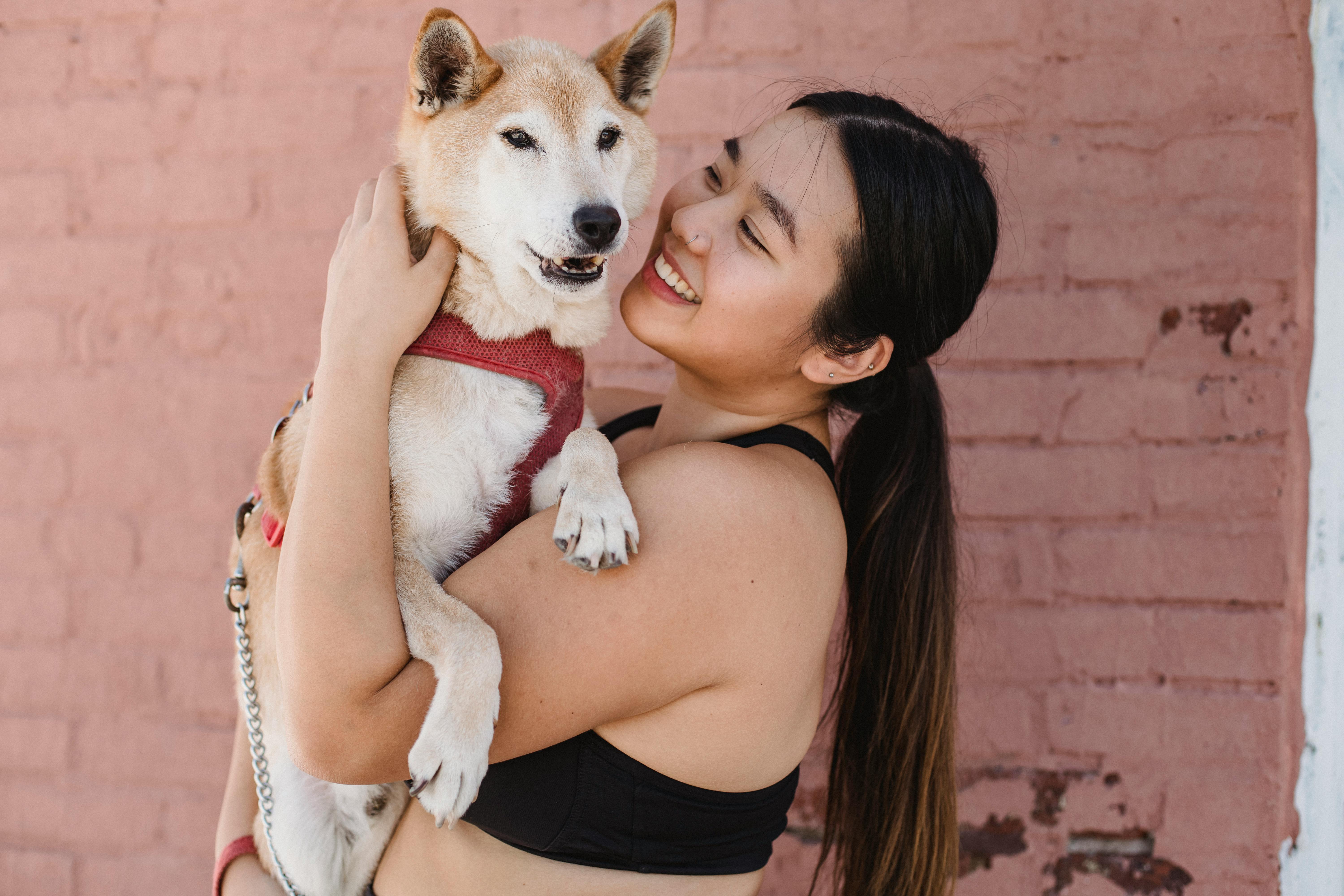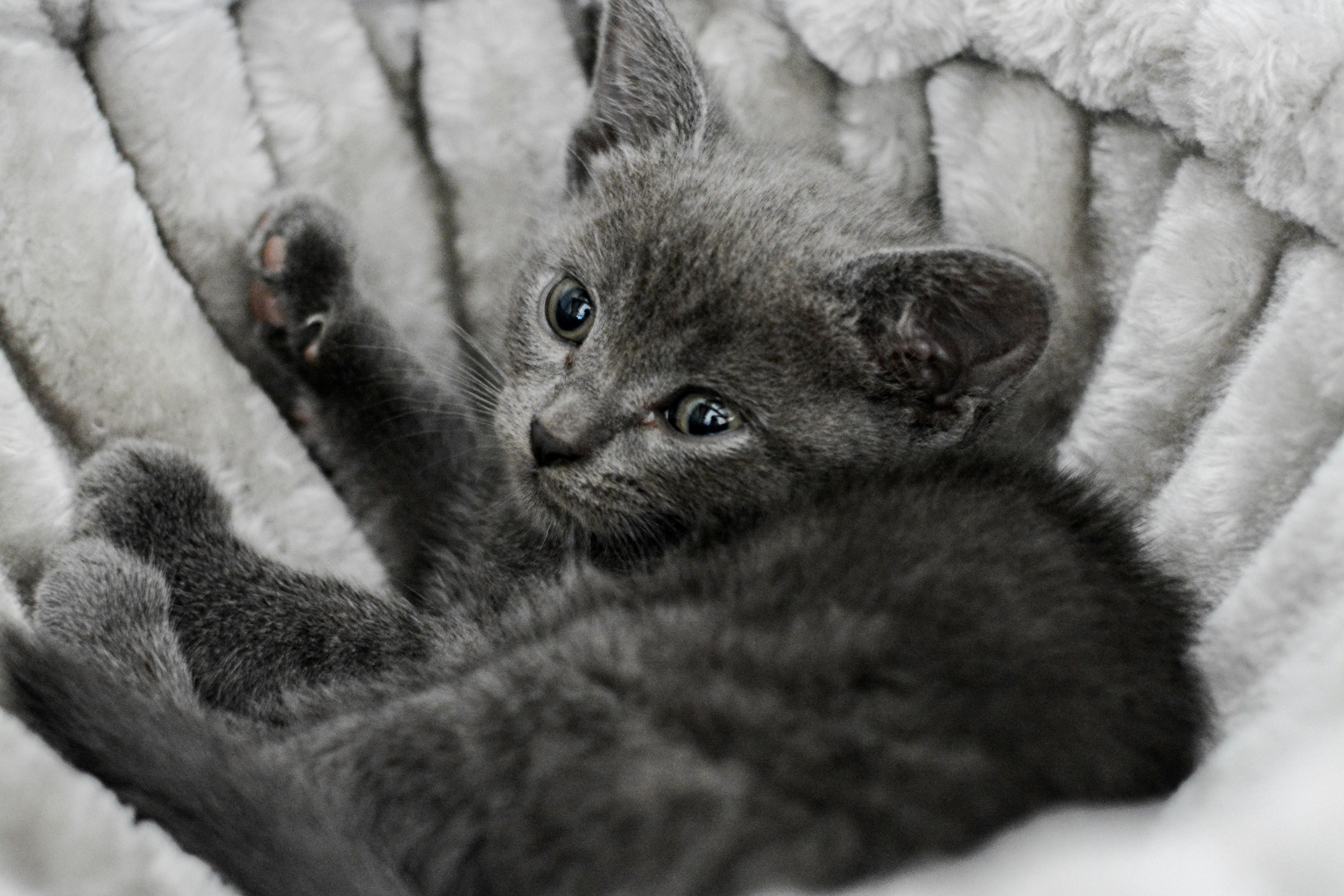Dog hair (called chiengora) can be spun into yarn, just like sheep’s wool, alpaca or any other animal fiber. The process is the same. Dust and oils can be removed from spun hair, so there is no “doggy smell”. Surprisingly, spun yarn is warmer than wool, easy to care for, and has a fluffy angora-like texture. Until recently, most dog owners did not realize that the beautiful colors and texture of their dog’s coat could be used in the manner of sheep’s wool.
It really is as easy as brushing your dog. There are some guidelines for getting the best and smoothest yarn possible.
When brushing your dog, be sure to collect it from the areas where the hair is longest and softest. This is the inner layer. Hair should be 2 inches or longer for best results. Hair should be clean and dry, free of grass and debris. Brush the hair on the longest and softest parts of the dog, saving only this hair. It’s the undercoat you want, not the thick top coat. Clippings will not work well for spinning with double-coated dogs. There is too much protection hair and the quality of the yarn will not be as pleasant as the sheer undercoat.
Remove the dog hair from the brush and store it in a paper bag. Keep hair that is completely dry and as clean as possible. (Don’t try to clean it after you’ve brushed the dog!) Bathe your dog first and brush when the hair is dry.
The paper allows the fiber to “breathe” and not get trapped with oils in a plastic bag. The best way to store hair from brushing is in a paper bag or a cloth bag, such as a pillowcase. Despite what your mother or grandmother used to do, NEVER USE MOTH BALLS! Mothballs contain a toxic chemical that is dangerous to breathe and it is impossible to remove the smell of mothballs from your hair.
How much you save It depends on what is done with the finished thread. Most small projects use about 6 ounces of hair.
Transforming dog hair into yarn takes a lot of time and care. First, the yarn spinning is evaluated. Depending on the length and how the yarn will be used, I determine if the hair needs to be mixed with a soft merino wool. The blend minimizes shedding and produces a more durable yarn. Although most people want 100% of their dog’s hair to be used in a product, this is not always possible. The color of the dog can still be seen and the fluffy texture is still present in the finished yarn.
From this point on, the process is the same as that of spinning sheep’s wool. I use a drum carder for the mixing process. This card has metal teeth that comb through the wool, so the fibers are aligned and ready to spin. The fiber is lifted from the drum carder, loosely wound, and set aside by the spinning wheel.
The thread is spun into individual strands on a spinning wheel and then doubled for strength. The yarn is then cleaned by hand, with a mild conditioning detergent or dog shampoo, and air dried. It is then rolled into balls or skeins and then ready to be knitted or crocheted into a scarf, hat, ornament, and many other things.
Because it is handmade and personal, a chiengora gift makes a sentimental keepsake. It is best to start collecting hair while your pet is healthy and younger. People have often told me that it is comforting to have a soft scarf, hat, teddy bear, or other item made from their dog’s fur, and that brings back happy memories.



